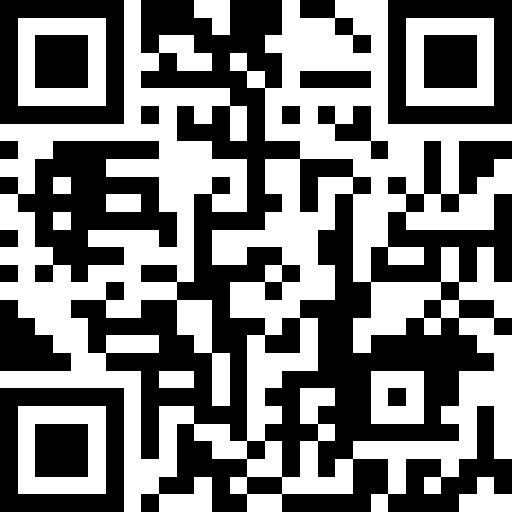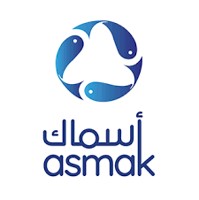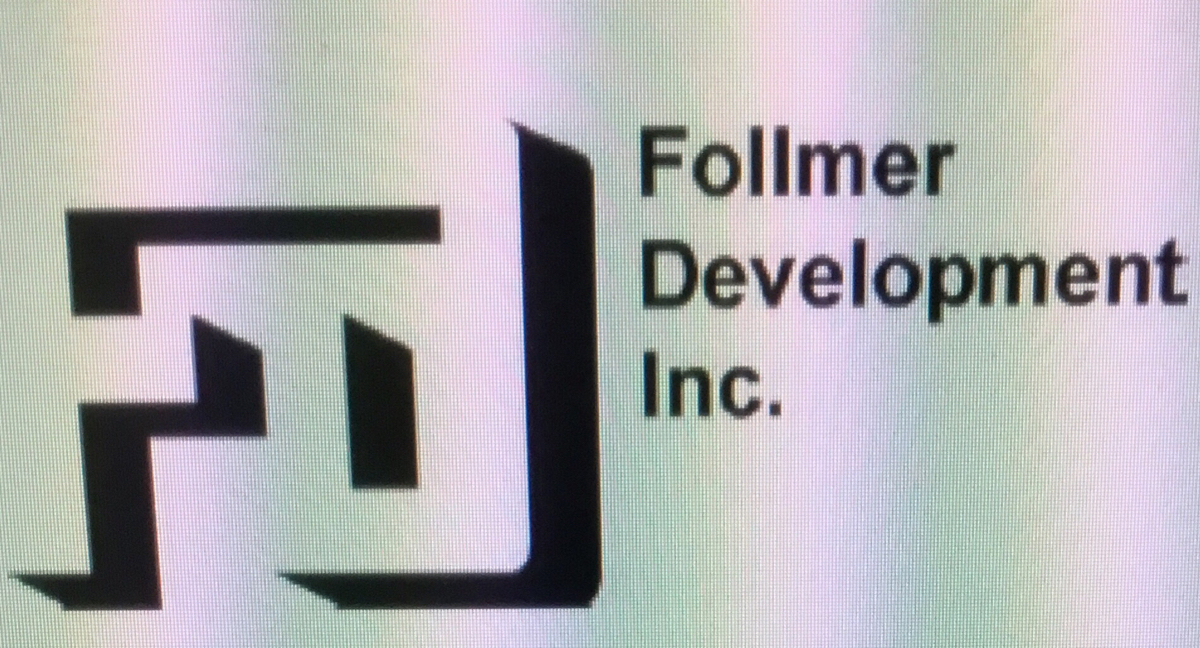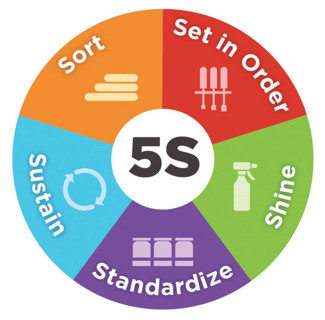Title Page
-
Prepared by
-
Location
Untitled Page
-
Supplier Audit Standard
-
Supplier:
-
Site Address:
-
Audit date:
-
Audit attendees :
-
Audit attendees Supplier:
-
AUDIT AGENDA
SITE OVERVIEW
-
Senior Mgmt Commitment
-
1.0 The site senior team shall be responsible for Food safety culture should be evident
-
defining, maintaining and demonstrating a clear documented plan for development of Food Safety, Quality and Integrity culture. there shall be up-to-date organograms available on site, clearly showing management responsibilities
-
This should include deputies
-
1.1 defining, maintaining and demonstrating a clear documented plan for development of Food Safety, Quality and Integrity culture. there shall be up-to-date organograms available on site, clearly showing management responsibilities of product safety, integrity, legality, human rights, sustainability, and quality at all levels within the business.
-
The senior management team meetings should annual senior mgmt review minutes include discussions relating to production
-
improvements, food safety, audit results & customer complaints as well as financial reporting.
-
These meetings are documented & any improvements recorded.
-
The site senior team shall be responsible for Food safety culture should be evident throughout the site (talking to staff/notice boards etc.)
-
defining, maintaining and demonstrating a clear documented plan for development of Food Safety, Quality and Integrity culture. there shall be up-to-date organograms available on site, clearly showing management responsibilities of product safety, integrity, legality, human rights, sustainability, and quality at all levels within the business.
-
The senior management team meetings should annual senior mgmt review minutes include discussions relating to production
-
improvements, food safety, audit results & customer complaints as well as financial reporting.
-
These meetings are documented & any improvements recorded.
-
A detailed live HACCP must be in place with the HACCP in place, with HACCP team
-
All CCP's must be identified within the factory, monitored & recorded.
-
The site through HACCP will have identified key controls to reduce risk of physical contamination. The site HACCP shall be developed and HACCP Team are appropriately trained. Operatives managing CCP's are aware of the critical limits and corrective actions
-
The team leader shall have appropriate knowledge of HACCP as well as site processes and products being manufactured.
-
All relevant information needed to conduct the hazard analysis shall be collected, maintained, documented and updated. The company shall ensure that the HACCP or food safety plan is based on comprehensive information sources, which are referenced and available on request.
-
The site has correctly identified all relevant foreign body risks and these are controlled to an acceptable level.
-
The HACCP team shall define critical limits for each CCP to clearly identify safe and potentially unsafe products. ALL critical limits should be validated and appropriate to control the relevant hazards in the production process.
-
there shall be documented Pre requisite
-
Include as a minimum: Hygiene, Allergen, Pest Management, Barrier Control, Personal Hygiene, Procurement and Supplier Approval, training, Engineering/Maintenance, Transport, Segregation and processes to prevent cross contamination, Calibration
-
A process flow diagram for each group of products or processes. This shall mirror the site plan and shall be constructed by the HACCP team cover all aspects of the operation from raw material receipt through processing, storage and distribution
-
The site HACCP team shall verify each process flow diagram by physically walking the process in the factory minimum yearly or following any changes. The record of verification shall be maintained
-
Any changes to the HACCP flow or CCP's should be documented and must be communicated
-
Premises
-
External areas shall be maintained in good order.
-
Any grassed/ planted areas shall be regularly tended and maintained to stop harbour of pests.
-
Security
-
Maintenance
-
An appropriate system to be in place to all PPMs are tracked and any outstanding are PPM's are highlighted to the appropriate site management outstanding PPM's? (meetings/part of sites KPI) How does site keep on track or highlighted to the appropriate site management outstanding PPM's? (meetings/part of sites KPI)
-
Any grinding or drilling (i.e. the ability to create metal swarf) must be undertaken in a designated area which can be screened off. Staff undertaking these activities must wear a coat over their PPE to prevent contamination.
-
Also consider how material are signed off post maintenance work. Any equipment worked on should have been cleaned prior to re-commissioning. This should be documented. Maintenance staff should follow the same hygiene principles as all other staff. Check hygiene controls for maintenance staff.
-
Swarf mats should be used to prevent swarf entering the factory.
-
Engineers tool boxes must be kept well maintained with a detailed inventory, with all equipment cleaned after use.
-
Dedicated tools/tool boxes should be used within the factory. Should not be any tools left on factory floor. Ideally tool boxes should have locks.
-
All lubricants for food contact and secondary food contact surfaces shall be food grade and of a known allergen status. Material and allergen suitability information shall be readily available. Where non-food grade lubricants are used on site, these shall be kept segregated from food grade lubricant and locked with authorised access only.
-
All water and other forms of water (e.g. ice, steam, contingency water supply) used as an ingredient, for hand washing or equipment cleaning shall be potable and comply with relevant legislation. Where non-potable water is used on site (e.g. for toilet flushing), it shall be segregated and controlled.
-
The site through HACCP will have identified key controls & these are documented.
-
Where sieving/filter is used the size is documented & the frequency of checking is prior to start of production & at the end of production as a minimum. Check production records whilst on factory floor to see if any forms are being completed properly during production- also opportunity to assess past production records. Manually inspect sieves filters whilst in factory.
-
Where metal detectors/X-rays are used the requirements for checking are prior to commencing production, every 2 hours, after breaks/breakdowns and at the end of production, using ferrous, non-ferrous & stainless steel test pieces. All checks must be documented. Test pieces sizes should be documented and labelled.
-
Annual validation/calibration of sensitive equipment (e.g. scales, stamp weights, temperature equipment)
-
Appropriately trained individuals carrying out CCP checks
-
there shall be a documented metal and /or x-ray detection procedure and shall include responsibility of conducting tests, sensitivities of detection, methods and frequency of detection.
-
Fail-Safe test should be carried out based on RA. The fail-safe system shall also be linked to any conveyor belts before and after the detector to prevent contaminated packs from being 'lost'.
-
Magnets shall be inspected for finds/integrity checks and cleaned at an appropriate frequency e.g. at the same time when sieve checks are completed. Foreign bodies found on the magnet shall be included within the site's foreign body trending, where applicable. Records shall be maintained.
-
Where a check has failed production must be placed on hold from the last good check whilst investigations are held. When the equipment is correctly functioning the 'on hold' stock must be re-checked prior to outload.
-
Any plastic bags/sheets in contact with product must be a minimum of 45nm to prevent tearing. The site will have use 'safe knives' to open bags & not permit employees to tear bags open in order to prevent plastic/paper potential FB's.
-
No staples, pencils or 2 piece pens to be used
-
Pens should be metal detectable
-
Food containers, packaging or distribution tray/crates shall not be used to store any other materials (e.g. Nuts, bolts, tool, chemicals etc.)
-
There shall be a documented sharp metal implements procedure to manage metal implements e.g. knives, blades, scissors, needles and wires (where applicable). The procedure shall cover identification, issuing, storage and inspection of these implements as well as action taken in case of damage or loss.
-
There shall be a documented glass and hard plastic handling and inspection procedure. All glass and hard plastic items should be checked on a risk assessed frequency.
-
Wood shall not be allowed in open product areas.
-
There shall be a risk assessment in place where the use of wood cannot be avoided
-
Documented cleaning procedures for all equipment, which staff are trained against & their training is documented.
-
All chemicals shall be used according to the manufacturer's instructions and legislative guidelines (e.g. temperature, dilution etc.). Cleaning chemicals shall be suitable for their intended purpose, e.g. detergent, sanitizer, disinfectant. All MSDS should be available hand wash should be antibacterial.
-
Equipment used for cleaning food contact surfaces shall only be used for that activity. This equipment shall be visually distinctive and shall be stored separately from other cleaning equipment used for floors and other areas.
-
Clearly signposted, segregated, and designated cleaning equipment for allergens.
-
A clean area should be designated to ensure cross-contamination between clean & dirty equipment does not occur.
-
All laboratory testing shall be contracted out to a UKAS/ ISO 17025 accredited lab.
-
There shall be a scheduled program of product testing which may include microbiological, chemical, physical, and organoleptic testing according to risk.
-
Production samples should be retained for at least the shelf life of the product. Corrective actions for positive results and trending should be in place and documented where action is taken.
-
All out of specifications results/trends shall be fully investigated and acted upon following full root cause analysis.
-
Waste transfer routes shall be clearly defined on a site map and waste disposal (including allergen waste) from all open product areas shall not cause a food safety risk/product contamination.
-
The site shall contract the services of a competent pest management organization, or have appropriately trained staff, for the regular inspection and treatment of the site to deter and eradicate infestation.
-
The frequency of inspections shall be determined by risk assessment and shall be documented.
-
Storage area shall be clean and tidy with a plan in place for regular cleaning including high level cleaning. Materials (including food trays/storage containers) shall not be stored directly on the floor and against the wall. Where pallets are used, these shall be clean and free from contamination.
-
All raw materials shall be labelled &
-
Previously opened bags are sealed sealed/resealed with no foreign body risk and labelled appropriately. Excess packaging removed. Office areas tidy with essential stationary only- no pins, staples etc. Clear space left around storage areas for access for pest inspections. No debris on floor Clear labelling of allergens, segregated Allergenic ingredients should be stored and areas. Previously opened bags are labelled appropriately and cross contamination fully sealed.
-
Storage risk assessment also includes scope of the allergen risk assessment any relevant ingredient claims e.g. Kosher Identification and traceability of all stored material including part used raw materials and packaging shall be maintained. They shall be fully sealed in there packaging while in storage.
-
Vehicle inspection should be completed prior to loading records should be kept and maintained for a minimum of 3 years
People
-
The requirements for personal hygiene shall be Should include, Hand washing, jewelry documented and communicated to all personnel. policy, fingernails, perfumes/makeup
-
Visitors and contractors shall be required to read, understand and accept health, hygiene and safety rules prior to entering production and storage areas.
-
All staff to have received basic food hygiene & allergen training within the first 12 weeks of employment.
-
Any open cut, abrasion or burn on exposed skin shall be covered by blue metal detectable waterproof plasters, issued by an authorised person. There shall be a log maintained for issue and return of plasters and all plasters accounted for at the end of each shift. In addition to a plaster, a glove or finger stall shall be worn in open product areas. There shall be documented instructions in place in case a plaster is lost to ensure no impact product safety.
-
Eating, drinking (except water in designated area), chewing gum and smoking (including e-cigarettes) shall be strictly prohibited in production, storage and any adjacent offices/workshops. Smoking shall only be allowed in designated smoking area. Tasting of product shall only be allowed in dedicated taste panel/TAYGO rooms in production areas.
-
Hand Washing & drying facilities are provided at all Should be soap, water and drier entrances to the production environment. (paper/air). If paper, should be blue or coloured. Hot water should be available and reported if not available
-
Appropriate PPE is provided for all personnel See if site has audited the laundry site or has any HACCP details for the site.
-
All PPE must be removed prior to eating or going to toilets
-
Captive footwear or overshoes should be used in the factory.
-
Staff must be trained appropriately for the role they Check who has provided the training, are they appropriately trained themselves? Training must include agency staff and contractors themselves?
-
All training undertaken must be documented Should include: Name and date of trainee, duration of training, title of course contents/procedures covered, name of trainer
Quality Management
-
The site's procedures, working methods and All records shall be legible, completed practices to ensure food safety & quality shall be accurately and retrievable.
-
All records shall be legible, completed accurately and retrievable.
-
Collated in the form of a quality manual (printed or electronic), and the appropriate sections shall be available to staff as required. These documents shall be clear, legible, and unambiguous.
-
Each Product produced must have a documented & agreed product specification which includes food safety & quality parameters approved on Probase. all supporting documents on Probase should be within date. Surveys should be completed with a signed warranty attached.
-
Internal Audits
-
An internal audit program must be in place and be live with a documented schedule.
-
The audits must have a documented procedure defining the audit scope and elements of the factory being audited.
-
The audit must be carried out by appropriately trained personnel.
-
Non-conformances must be documented & closed out within the assigned period.
-
There shall be a documented procedure to manage non-conforming products and equipment which are either rejected, released, or reworked based on the risk involved.
-
All non-conforming products will be clearly states requirements for identification, reporting, segregation, labeling, storage, and product "on hold" for food safety, disposal, or release of non-conforming products to legality or integrity reasons can only be ensured these do not pose risk to other raw material or product.
-
Manager or a nominated deputy will release products on hold.
-
Stock on hold should have physical labeling detailing that it is on hold and details of why.
-
All non-conformances (in particular where a non-conformity places the safety, authenticity, or integrity of a product at risk, or where there is an adverse trend in quality) shall be investigated.
-
There shall be a documented procedure for the root cause analysis (based on Fishbone diagram or 5 Whys technique). This can be part of the corrective action procedure
-
Records shall be maintained including traceability detail, root cause, corrective and preventative actions, and timelines for closure.
-
Traceability/Incident mgmt
-
The system should be able to trace 100% of the raw and finished products, including primary packaging, through all stages of the process from point of material receiving through shipment to the first external customer within a 4-hour timeframe.
-
Traceability clear and logical?
-
Crisis/Incident Management
-
A documented up-to-date crisis/incident management procedure must be in place. This procedure must be tested annually with the findings & any required improvements recorded.
-
The site shall encourage internal reporting as part of food safety and quality culture development program.
-
Is there signage around the site, speaking to employees on what they would do if they saw a food safety issue?
-
The site must have an allergy policy & ensure all staff comply with the relevant rules (e.g., nut-free site).
-
Review all process documentation. Has it been completed correctly? Do the checks make sense & are the CCP checks recorded at the appropriate time & signed?
-
All packaging must be controlled & documentation
-
Is there a documented procedure in place to ensure the correct packaging is used for each product?
-
Are the checks clear & documented?
-
Is a sample of the packaging used or photographed as evidence? Does the number of checks tally with the length of production?
-
Is there a documented line clearance procedure & is it being followed?
-
Packaging Control
-
There shall be a documented packaging risk assessment in place to determine the requirements for an online packaging verification system.
-
There shall be a documented procedure for the setup, management, and running of automated packaging verification and coding system.
-
All equipment used to monitor CCP's, food safety, or check that metal detectors are legal (e.g., weight) requirements must be calibrated to the test pieces used.
-
Weights are calibrated against weights and correct weights.
-
Where equipment settings are critical to food safety or legality (metal detectors, X-Ray, checkweighers, Barcode scanners) these shall be password protected (where possible) or restricted so that they may only be altered by authorized and trained staff.
-
Where alterations occur, this shall be documented, with justification noted.
-
The shelf life assigned to raw materials upon Work In Progress and part used/opening of packaging shall be established and raw material batches (including used for development work) shall be stored in such a way that it is protected from contamination and be clearly identified at all stages with product details, production date/time and internal use/process by dates/time to ensure its correct usage and traceability.
-
WIP/rework Rework shall be risk assessed in order to determine whether the rework itself could pose a contamination risk. Rework shall only be permitted on a like-for-like basis and documented in product specifications with the allowed percentage. Where concession is granted to rework in a similar product, all segregation requirements including allergen, claims, welfare standard etc. shall be evaluated.
-
Full traceability of rework shall be maintained by appropriate labeling and documentation.
-
The allergen risk assessment shall be reviewed as a minimum annually or documented to highlight the potential for allergy following any changes to the allergen cross-contamination. The assessment must include mitigation of the risks & how these are to be controlled. The assessment must cover allergens from raw materials through to process and must include supplier cross-contamination risk through manufacturing and possible field-level contamination.
-
The relevant retailer's technical lead shall be informed prior to the changes for approval. The output of allergen risk assessment review shall be included in the site annual management review process.
-
Quality of finished product should be assessed at an appropriate frequency to control product quality. Any deviations should be investigated and any required actions completed to prevent reoccurrence. A documented process for checking finished product weight should be implemented and documented, including the method of weighing (manual/checkweigher), frequency, failsafe check, record completion, process of handling rejected weights, and appropriate spillage controls. The area shall be signed off by an authorized member of the team following the completion of spillage control procedure.
-
Validated cleaning methodology shall be in place which is routinely verified across all processing equipment and the environment. This is validated to ensure the removal or reduction to an acceptable level of allergenic material, micro and flavor or color taints. This includes tray washing and automated cleaning systems (where applicable).
-
The initial validation shall be conducted at least three times covering all cleaning shifts/cleaning teams considering worst-case scenarios. The first pack for the product after clean shall also be tested for allergen of concern. This shall be repeated following any changes or at least annually. Where the risk cannot be controlled, Customer must be informed of the risk.
-
Every batch produced must have product assessed and documented as a minimum at beginning, middle & end of run.
-
Other checks should be in accordance with requirements in specifications e.g. pH, law, moisture, etc.
-
Shelf-life Verification
-
The site shall ensure that a system of validation and ongoing verification of the shelf life is in place. This shall be based on risk and shall include sensory analysis and, as applicable, microbiological testing and relevant chemical factors such as pH and law. Records and results from shelf-life tests shall verify the shelf-life period indicated on the product.
-
Material Handling
-
Weigh up/batching - All raw materials should be separated in an area to ensure cardboard & wood must not be near open product.
-
Separate decanting area is preferable. If not in place, then there should be a clear GMP process for how decanting takes place and how the risk from FB contamination is controlled.
-
Facility Sanitation
-
Packing the area needs to be tidy & well-ordered with clear separation between products. No evidence of material from other productions should be present (e.g. wrappers, product itself etc.). Where multiple lines, there must be clear separation between lines and designated staff per line for each shift. Consider any risk from allergens where multiple lines.
-
Raw material buying procedure which is documented suppliers? Does a schedule exist for Raw Materials this? Are meetings with suppliers documented?
-
An approved ingredient & packaging supplier list is available and will include emergency contact details. Only materials from approved suppliers are on site.
-
Supplier approval will include; HACCP, allergen risk (back to farm level), Food Safety Culture, traceability controls, Foreign body controls, Visibility of the supply routes, GFSI and other audit performance.
-
All raw material specifications should ensure compliance with relevant safety and legislative requirements. The specifications shall include defined limits for relevant attributes of the material. Is there a management system in place to ensure that outdated products (e.g. chemical, microbiological, physical or allergen standards) are flagged for updates? Specifications should be dated within 3 years.
-
Supplier performance is monitored and actions are taken to improve or remove these sites. If Suppliers are audited the auditor should be suitable trained and non-conformances are closed out with evidence.
-
Where raw materials are purchased through buying agents the manufacturing site for the raw material must be known and documented.
-
All incoming raw materials must be inspected against conformance to specification.
-
A documented vulnerability and threat assessment with regard to raw materials should be completed and reviewed at a minimum annually, inclusive of any known material risks. Appropriate sources should be referenced and relevant databases reviewed regularly to highlight any emerging risks.
-
Ethical and Sustainability Points for Review.










